
Good morning class, and welcome to Peanut Butter 201. If you haven’t taken Peanut Butter 101, I strongly suggest you do so first. Otherwise, please take out your spoons and do some wrist exercises to warm up your stirring technique. Warmed up? Good. We’ll be going over a few advanced techniques today but whether your a peanut butter veteran, foraying into the all-natural world, or looking to solve some of the great mysteries of peanut butter – look no further. Today we’ll scour the land for the elusive “Natural No-Stir” claim, and dig deep into the hard layers of peanut butter at the bottom of your all-natural jar in search of answers. But what is the question? To refrigerate, or not to refrigerate, that is the question.
Natural No-Stir (or Low-Stir) Techniques
e.g. – Skippy Natural, Jif Natural, Kelkin Natural, Once Again American Classic, etc…
Natural No-Stir peanut butter has become increasingly popular in the past few years. This type of peanut butter is an attempt to combine “Natural” and “Standard” peanut butter. Instead of hydrogenated vegetable oils (which contain a trivial amount of trans fat), natural no-stir peanut butter uses palm oil to prevent the oil from separating to the top. Unfortunately, palm oil isn’t as effective as hydrogenated oils, so you will always have some oil separation. Some brands even use the term “Low-Stir” to more accurately describe it. As for the health aspect – hydrogenated oil contains trans fat while palm oil contains saturated fat, so by choosing natural no-stir you’re simply switching one for the other. However, the typical amount of palm oil in natural no-stir peanut butter is only 1-2%, so any negative health effects are likely negligible, even for a peanut butter addict like myself.
For those trying to go the all-natural route or for those sick of the oil separation in natural peanut butter, you may be disappointed with the small amount of oil separation of natural no-stir peanut butter. However, here are a few options to deal with this:
1. Store the jar in the refrigerator. Storing natural no-stir peanut butter in the fridge is a good way to slow the process of oil separation. Conversely, storing the peanut butter in a warm/hot location makes the oil separate faster. And it isn’t nearly as annoying as storing natural peanut butter in the fridge, since natural no-stir peanut butter is typically very finely ground and still spreadable right out of the fridge.

2. Stir the peanut butter before each use. This has the advantage of mixing the oil back into the peanut butter. Unfortunately, stirring will make the oil separate faster in the future. This is because during production, the palm oil requires an exact temperature to “set” and crystallize. By stirring, you’re undoing the crystallization process.

3. Dump the oil off whenever it gets too oily. This is the easy way out. The only downside is that the bottom layer of peanut butter in the jar will be much harder then the rest of the jar. However, it won’t be as bad as if you let a natural peanut butter jar sit for a while without stirring.

Shelf Life and Refrigeration
Time for the big questions: How long does peanut butter last? and Does peanut butter need to be refrigerated?
Shelf Life
There are two types of peanuts used in peanut butter: regular peanuts and High-oleic peanuts. Peanut butter made from regular peanuts will typically last 1 year. Peanut butter made from High-oleic peanuts will typically last 2 years. How can you tell the difference? You can’t, except by looking at the expiration date on the jar. However, don’t believe everything you read. When peanut butter starts to go bad, it will start smelling a little “musty” or sour. Even at this point it’s safe to eat, and won’t taste much different. Once the smell becomes stronger, the flavor will change and begin to taste like it smells – slightly sour and bitter. At this point it’s still not hazardous to your health, but there’s really no reason to eat it since it won’t taste very good. In order for mold to develop it takes a good bit longer, unless you’ve been dipping apple slices or fingers directly into the jar – in which case it’s probably contamination. Rule of thumb for peanut butter shelf-life: If it looks fine and smells fine then it is fine.
To increase the longevity of your peanut butter, refrigerate it. To decrease the longevity of your peanut butter, store it in your oven*.
*Disclaimer: Don’t actually store peanut butter in your oven, it will make a mess.
Refrigeration
Refrigeration will extend the life of peanut butter and many jars of peanut butter even state “Refrigerate After Opening”. I’m here to inform you that refrigerating peanut butter is NEVER necessary. However, there are a few exceptions to that rule: specifically, if the peanut butter contains any ingredient that is perishable. There are only a few small companies that make peanut butter with perishable ingredients, and you likely won’t come across them in a store, but rather a farmer’s market. Even if you find fresh-ground peanut butter in the refrigerated section of your grocery store, it still doesn’t need to be refrigerated. Although, there are some pros and cons to refrigeration:
Pros: Longer shelf life; Slows the oil separation process.
Cons: Harder to spread; Rips up your bread; Warm peanut butter tastes better; You might forget about it buried in the back of your fridge.
Besides being unnecessary, my suggestion is to never refrigerate peanut butter, even if the label tells you to do so. Even if you only buy natural peanut butter where the oil separates quickly, you still don’t need to refrigerate it, and my Peanut Butter 101 course will help you manage that pesky oil on top!
Additional Info:
Did I miss anything? Do you have any tips of your own? Let me know below!


 Print
Print Email
Email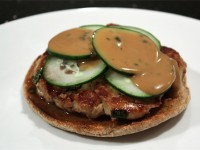
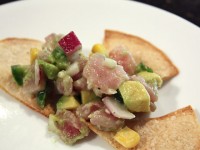
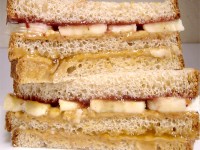
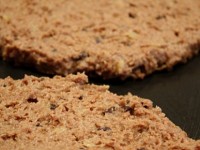
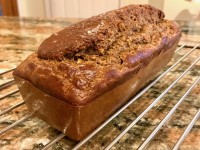
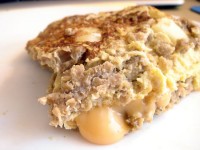




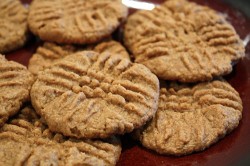

Yes and yes.
I think the best solution (so you don’t ever have to worry about expiration, storage places, oil separation, etc) is to just eat the whole jar in one sitting. Problems solved.
Debbie – I like the way you think!
Hmm, interesting. I don’t ever find that my no stir PNB needs stirring – what am I doing right?
I just wanted to say that in my belief, palm oil (from a sustainable source) is a healthy fat, as it is very stable and has been shown to have immune supporting qualities similar to coconut oil. Saturated fat is necessary in the diet for cell structure, so don’t worry about a little bit in your PNB. Trans fats are evil on the other hand no?
I have to admit to being a tahini addict these days – stirring that up is a whole other story.
x x x
Hey Naomi! It’s been a long time. I’m not sure what you’re doing right but I always seem to get oil separation…what brands do you buy?
I agree about the palm oil – as long as it’s from a sustainable source, palm oil is a natural, healthy substitute, especially in the small quantities in peanut butter.
Does the oil in tahini separate more? I assume it’s partially because it’s such a fine grind?
I’ve been off the grid for the last year building a house! It’s all finished now and we should moving in a few weeks – just trying to clean all that building dust off everything and pack up the old house. Looking forward to a loooong holiday.
I buy Waitrose own brand organic no stir PNB (no Waitrose in the states though?) or Whole Earth organic. Maybe the formula is different in the UK, who knows?
The difference with tahini is that it’s full of monounsaturates and polyunsaturates, which are completely liquid at room temperature – separation occurs daily! The more saturated a fat is, the more likely it is to stay emulsified at room temperature.
x x x
For me, I just want at least 99% peanuts for the flavour. The oily texture makes it easy to spread direct from my fridge and occasional stirring is just part of ritual. It doesn’t need palm oil and I’m avoiding unnecessary sugar that spoils the flavour. I even found a health shop in Ottawa that even provides customers with a grinder to process their own peanuts into 100% peanut butter. And you can even buy 99.5% peanut butter in UK shops.
nice use of the word rip…
Ok here’s my question…I regularly buy PB from the Saratoga PB Company…many of the kinds I get ” Monkey Boy and Adirondack Jack” to name a couple have some types of dried fruit in them. Would that be something that spoiled faster or should I just follow your normal all natural PB guidelines?
Good question Craig – while I don’t have a lot of experience with these types of peanut butter, I have had both of those flavors you mentioned (but only once, unfortunately). However, I would treat it like any other natural peanut butter as far as stirring/storing is concerned. As for shelf life – you can expect it to stay good only as long as the ingredient with the shortest shelf life. With dried fruits and nuts, it probably won’t shorten the shelf life at all, but with added flavors like “banana flavor” in Monkey Boy, you never know. Best bet would be to refrigerate half the jar while you store/consume the other half at room temp (so it’s more spreadable). Hope that helps!
I use my PB to make smoothies/ice cream. I freeze bananas. Peal bananas first – wait until they have brown freckles on the skin.
First add a raw egg and little water in the small blender to cover the blades, then 1 1/2 cut up bananas and a heaping tablespoon of all natural PB. Repeat 3 times a day as an in between meal snack :)
The oil in the PB jar is unwanted in my case. I am looking for a way to get the oil to separate more and faster. Once i have opened the jar and poured off the oil I then keep it in the fridge because I want all ingredients to be cold.
Walmart sells a Hamilton Beach personal size blender for $16 that works great for this. You eat it right out of the blender as your glass.
I go through a lot of PB and bananas in a month.
Whoa whoa whoa….raw egg? Is this some old-school body building routine? Why don’t you want the oil from the PB? The oil is very healthy and nutritious!
I use the frozen banana method as well – been doing it for years to make smoothies with cottage cheese (no-salt added), protein powder and other frozen fruit. Comes out like frozen yogurt!
I don’t want the oil because i believe that is most of the calories are. Plus i would like the PB to be as stiff as possible to make the smoothie thick. I eat it with a spoon like soft icecream.
Try one raw egg, see how you like it. Maybe try it twice if you are like me a creature of habit and don’t take well to change :)
I first tried raw eggs because i ran out of protein powder and i figured what could be better than unprocessed egg for protein. Now i always put one egg in because i like the way it makes the texture more creamy/velvety. Even when i have protein powder i still put in one egg. Try it and report back here!
“i would like the PB to be as stiff as possible”
that’s what she said
My latest attempt to get the oil to separate more and faster is to store my unopened jars on top of the fridge. I am hoping that it is warm up there and the vibration of the fridge motor and door/open closing will help it settle out.
Also i find the longer a jar sits the more it settles so an easy solution is to have a huge stock pile of PB so that the one i am opening has been sitting there a long time.
I mean, if you really want to dump the healthy, expensive oils then that’s the way I was going to recommend it. Keep the jars in a warm place – the warmer the better.
Can you suggest any brands of high-oleic peanut butter.
Goggle doesn’t show any and led me to your site.
The only brand I know for sure that uses them is our brand, Peanut Butter Boy.
Other than that, the only way to tell is if the product has a “manufactured date” and a “best by” date. Those dates will be approximately 2 years apart on peanut butter that uses high-oleic peanuts.
Hope that helps!